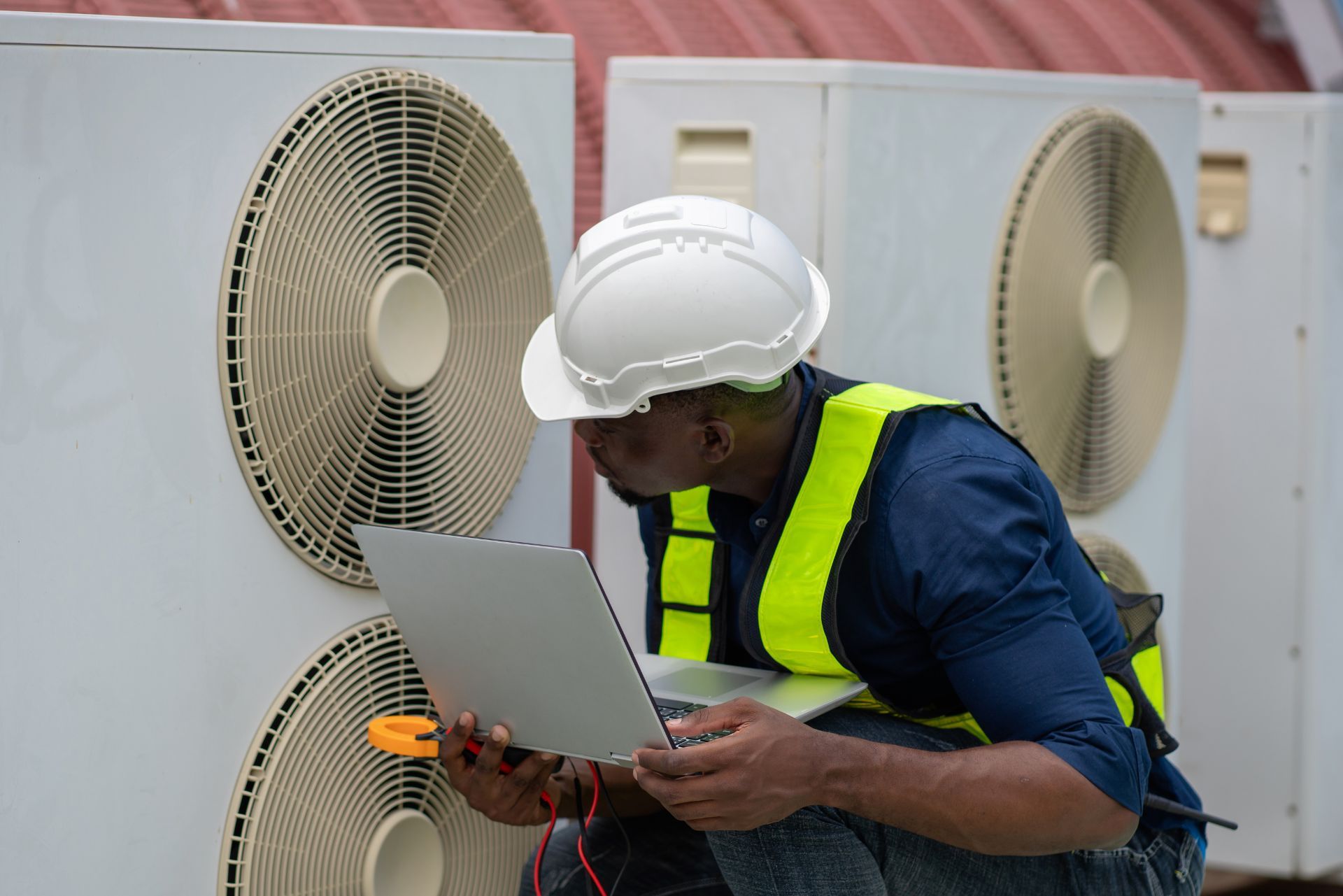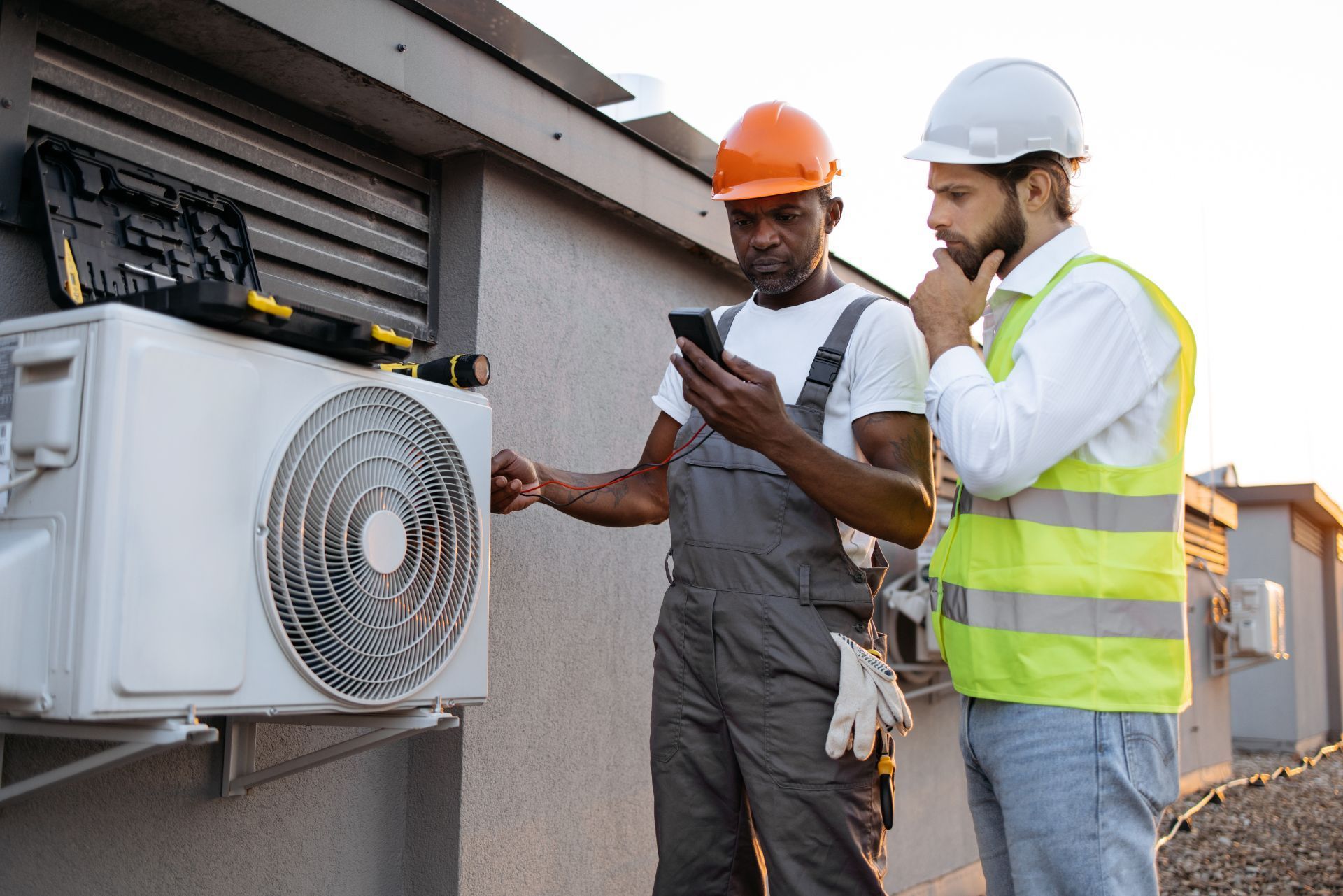Top 3 Recommended Policies

New Mexico’s HVAC contractors keep homes and businesses comfortable through dry summers and chilly desert nights. The demand for heating and cooling services continues to grow across the state, but with that growth comes new risks and responsibilities. Equipment breakdowns, on-site accidents, and shifting insurance regulations all make proper coverage essential for running a reliable business.
This guide explains how HVAC contractor insurance in New Mexico works, the types of policies you may need, and how state laws and market trends affect premium costs. Whether you are launching a new company or managing an established team, understanding your insurance options will help you protect your business and stay compliant in a changing market.
Understanding Insurance Requirements for HVAC Contractors in New Mexico
One of the most critical considerations for HVAC contractors in New Mexico is compliance with state insurance laws. Specifically, contractors with three or more employees are required to carry workers’ compensation insurance. This coverage protects employees in case of work-related injuries or illnesses and is a legal obligation that contractors must not overlook.
Failing to maintain workers’ compensation insurance can have serious consequences, including fines and potential work stoppages. According to Kickstand Insurance, non-compliance can disrupt business operations and damage a contractor’s reputation. Therefore, securing the appropriate coverage is not just a regulatory formality but a fundamental part of risk management.
In addition to workers’ compensation, HVAC contractors often need general liability insurance to protect against claims related to property damage or bodily injury resulting from their work. This insurance is crucial for shielding a business from costly lawsuits and ensuring financial stability in the face of unexpected incidents. Furthermore, many clients, especially commercial ones, may require proof of general liability insurance before awarding contracts, making it an essential component of business operations.
Workers’ Compensation Insurance Costs in New Mexico
The cost of workers’ compensation insurance varies by state and industry risk. For HVAC contractors in New Mexico, the rate is approximately $4.56 per $100 of payroll. This rate reflects the relative risk associated with the HVAC trade, which involves physical labor and potential exposure to hazards. It’s important to note that these rates can fluctuate based on factors such as the contractor’s claims history and the specific nature of their work, which can lead to significant variations in premiums.
Contractors should budget accordingly and work with insurance providers to find policies that balance adequate coverage with cost-effectiveness. Investing in safety training and risk mitigation can also help lower premiums over time by reducing workplace accidents. Additionally, many insurance companies offer discounts for contractors who implement comprehensive safety programs or who have a proven track record of maintaining a safe work environment. This proactive approach not only protects employees but also enhances the contractor's standing in the industry, potentially leading to more business opportunities and partnerships.

General Liability Insurance: What to Expect in Premiums and Coverage
General liability insurance is another cornerstone of contractor insurance portfolios. It covers claims related to third-party injuries, property damage, and legal defense costs. For HVAC businesses, this type of insurance is indispensable given the nature of their work, which often involves on-site installations and repairs. The risk of accidents, such as a slip and fall on a job site or damage to a client's property during service, makes this coverage essential for protecting both the contractor and their clients.
Industry analysis of over 1,100 HVAC contractor insurance quotes nationwide shows that general liability premiums typically range from 1.3% to 2.6% of annual revenue. While this is a broad range, it provides a useful benchmark for New Mexico contractors to estimate their insurance expenses relative to their business size and revenue. Factors influencing these premiums can include the contractor's claims history, the size of the business, and the specific services offered, which can all play a role in determining the final cost of coverage.
Understanding these cost dynamics helps contractors plan their finances more effectively and avoid surprises when renewing or purchasing insurance policies. For more detailed data on insurance premiums, see the ContractorNerd HVAC insurance analysis. Additionally, it’s important for contractors to regularly review their insurance needs as their business grows or changes. For instance, expanding services or hiring additional employees may necessitate a reevaluation of coverage levels and potential risks, ensuring that the business remains adequately protected against unforeseen liabilities.
Moreover, contractors should also consider the various endorsements and additional coverages that can enhance their general liability policy. Options such as product liability coverage, which protects against claims related to products sold or installed, and completed operations coverage, which covers claims arising after a job has been completed, can provide essential layers of protection. By tailoring their insurance policies to fit their specific operational risks, HVAC contractors can safeguard their business interests while also fostering trust with their clients, knowing they are adequately covered in the event of an incident.
Industry Trends and Challenges Impacting HVAC Contractors in New Mexico
The Heating & Air-Conditioning Contractors industry in New Mexico has experienced fluctuations over recent years. While the sector is projected to reach $609.5 million by 2025, reports indicate an annualized decline in industry revenue leading up to that year. This contrasts with national trends where the HVAC industry is generally expanding.
Such regional variations can influence insurance costs and availability. Contractors operating in a contracting market may face tighter margins, making efficient risk management and insurance planning even more critical.
Additionally, external factors such as environmental risks are increasingly shaping the insurance landscape. For instance, in July 2025, U.S. Senator Martin Heinrich co-sponsored the Wildfire Insurance Coverage Study Act of 2025, aimed at assessing how wildfires affect homeowners’ access to insurance. While this legislation targets homeowners, its implications ripple through the construction and HVAC industries, influencing insurance underwriting and risk assessments.
Preparing for Future Growth and Regulatory Changes
Looking beyond 2025, the Heating & Air-Conditioning Contractors industry in New Mexico is expected to return to growth, with projections showing an annualized increase through 2030. This optimistic outlook suggests opportunities for contractors to expand their operations, but also underscores the importance of staying current with insurance requirements and industry best practices.
Contractors should monitor legislative developments and industry reports to anticipate changes that might affect their insurance needs. Proactive engagement with insurance providers and legal advisors can help businesses adapt swiftly and maintain compliance. Moreover, as technology continues to evolve, HVAC contractors must also embrace innovations such as smart home systems and energy-efficient solutions. These advancements not only enhance service offerings but also align with growing consumer demand for sustainable practices. By investing in training and development, contractors can ensure their workforce is equipped to handle these new technologies, thereby improving efficiency and customer satisfaction.

Key Takeaways for New Mexico HVAC Contractors
Insurance is a foundational element of running a successful HVAC contracting business in New Mexico. Key points to remember include:
- Workers’ compensation insurance is mandatory for contractors with three or more employees, with a current rate of $4.56 per $100 payroll.
- General liability insurance premiums typically range from 1.3% to 2.6% of annual revenue, providing essential protection against third-party claims.
- Industry trends show regional fluctuations in market size and growth, impacting business strategies and insurance planning.
- Environmental and legislative developments, such as wildfire insurance studies, are shaping the broader risk environment for contractors.
By understanding these factors and securing the right insurance coverage, HVAC contractors in New Mexico can safeguard their businesses, comply with legal requirements, and position themselves for sustainable growth in a competitive market.
For a deeper dive into the industry’s economic outlook and insurance considerations, the IBISWorld New Mexico HVAC industry report is an excellent resource.
In addition to understanding insurance requirements, HVAC contractors should also stay informed about the latest technological advancements in the industry. Innovations such as smart HVAC systems and energy-efficient units are becoming increasingly popular among consumers, leading to a greater demand for contractors who are knowledgeable about these products. By investing in training and education on new technologies, contractors can enhance their service offerings and attract a broader customer base.
Furthermore, networking with local suppliers and participating in industry associations can provide HVAC contractors with valuable insights and support. Engaging in community events or trade shows allows contractors to showcase their expertise and connect with potential clients. Building strong relationships within the industry not only fosters collaboration but also opens doors to new business opportunities, ensuring that contractors remain competitive in an ever-evolving market.
Contact Us
HVACInsure is fully licensed and permitted to sell contractor and commercial insurance in New Mexico.
We proudly serve clients throughout New Mexico and maintain partnerships with local New Mexico insurance carriers to ensure HVAC professionals receive compliant, affordable, and comprehensive coverage that meets project and regulatory requirements.

About The Author: James Jenkins
I’m James Jenkins, Founder and CEO of HVACInsure. I work with HVAC contractors and related trades to simplify insurance and make coverage easier to understand. Every day, I help business owners secure reliable protection, issue certificates quickly, and stay compliant so their teams can keep working safely and confidently.
